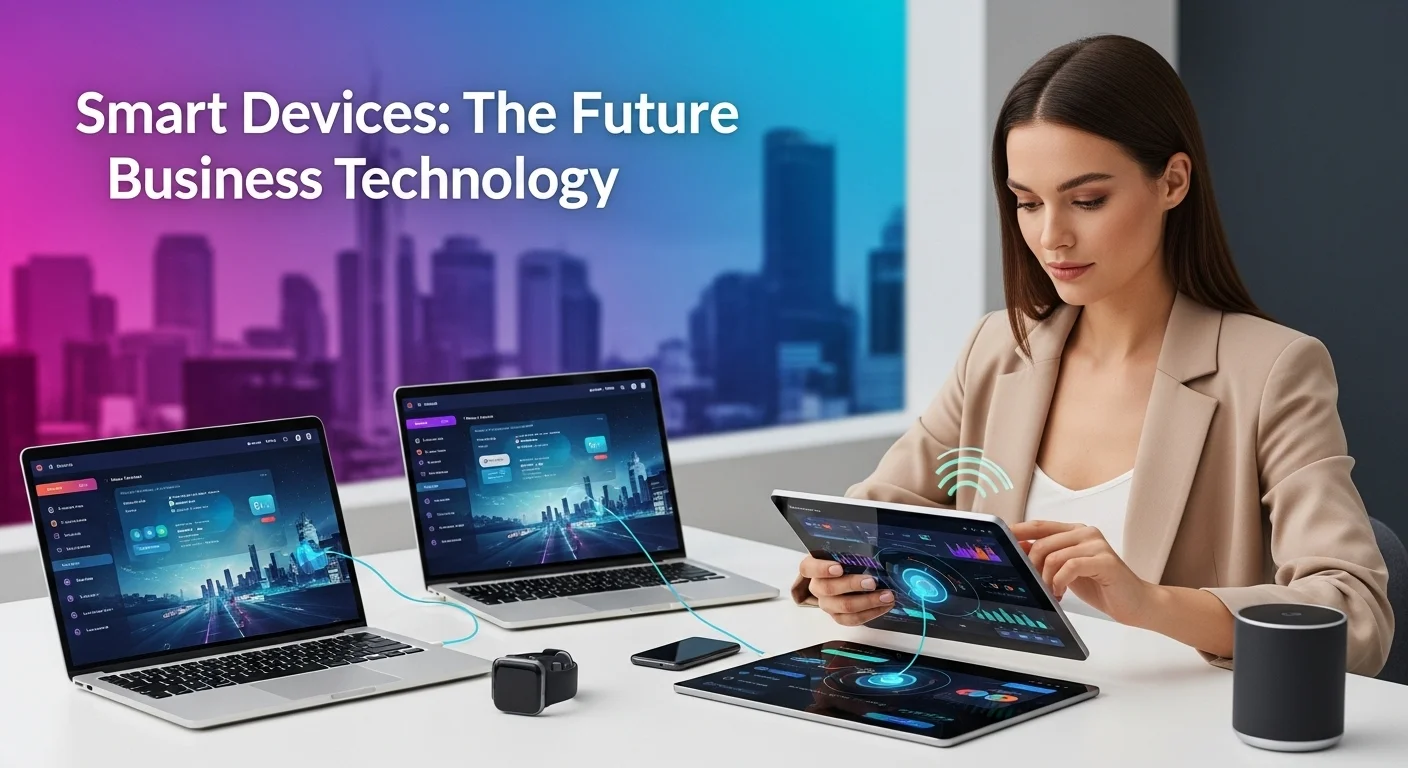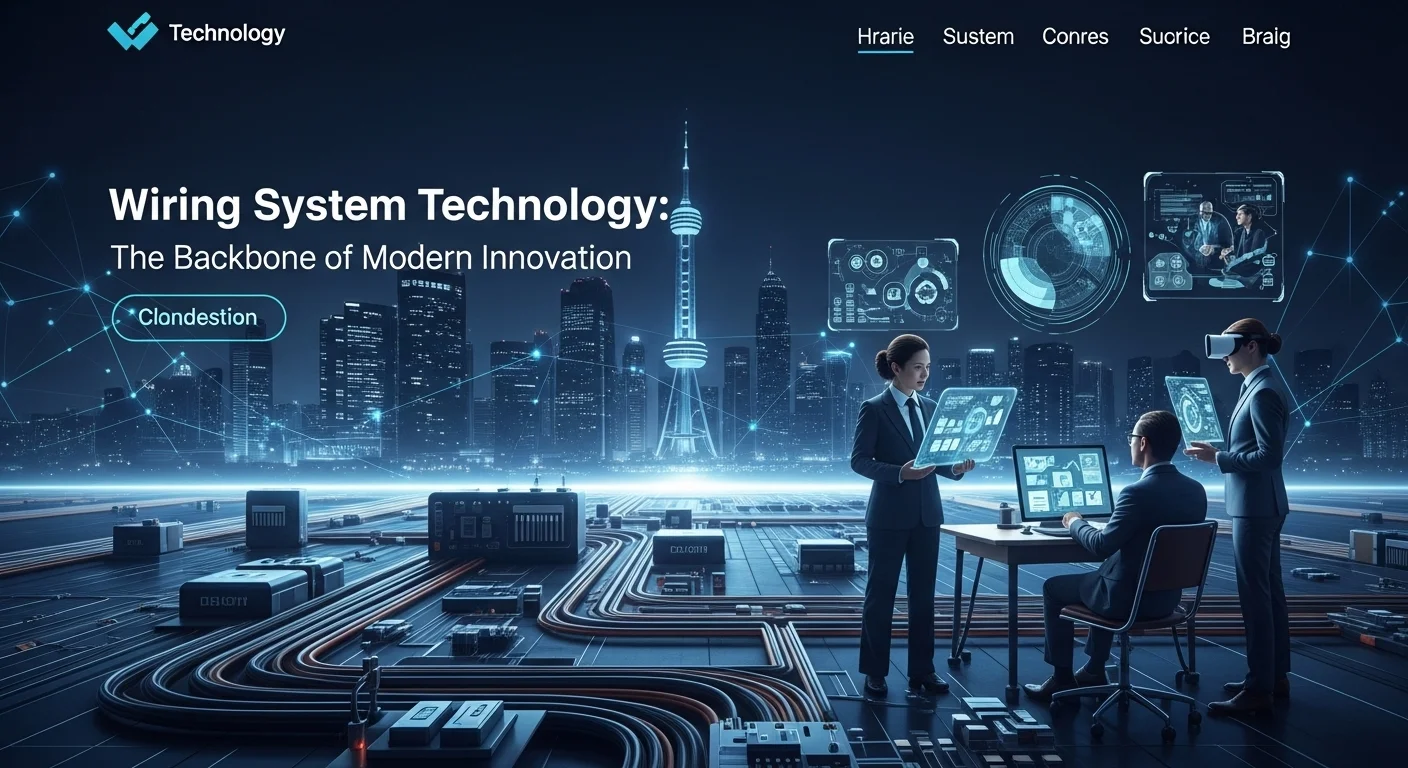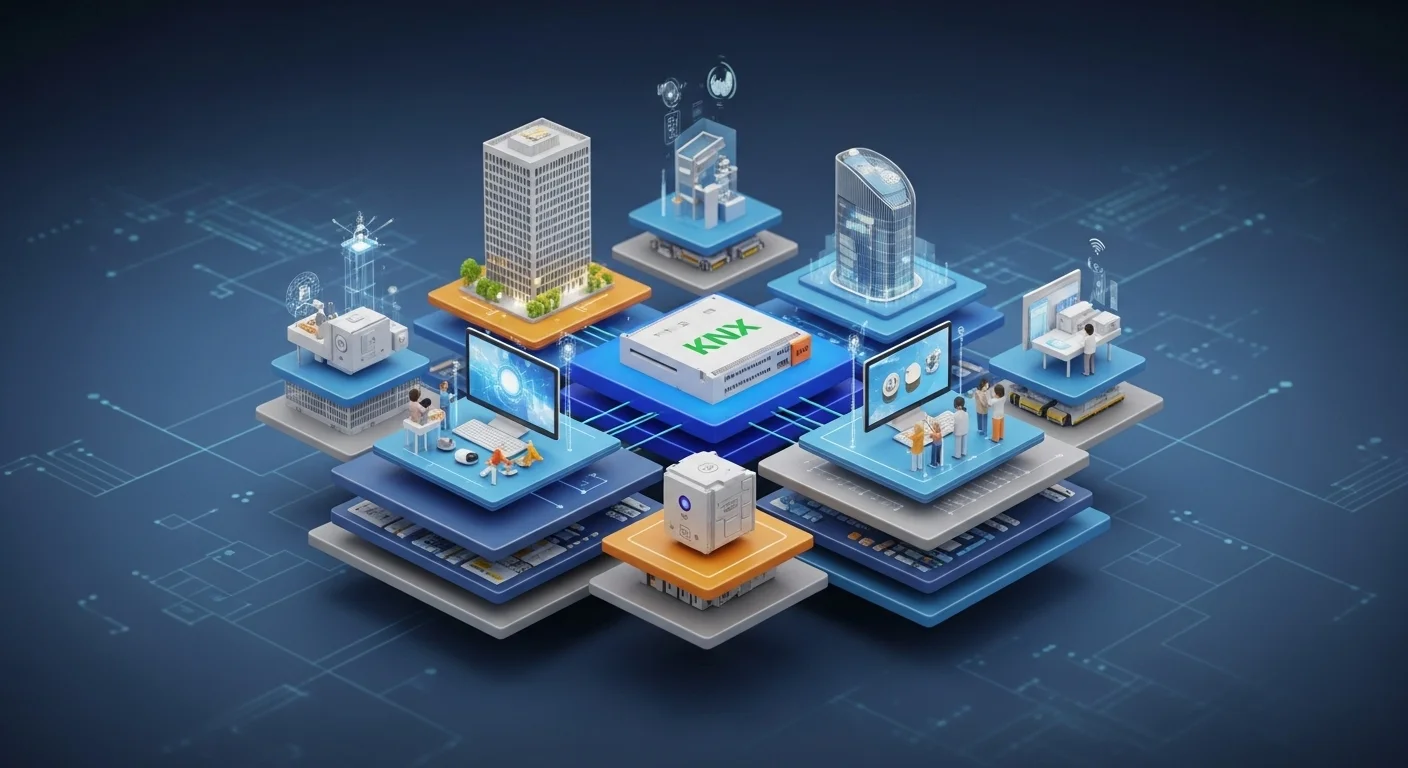A Strategist's Guide to Smart Devices: From Home Automation to Business Revolution

Executive Summary
Smart devices, the connected gadgets that make up the Internet of Things (IoT), have moved far beyond being simple novelties in our homes. They are now a core pillar of modern business technology. In my years as an integrator, I've seen these devices—packed with sensors and processors—completely change how companies operate. They collect and share data to automate tasks, reveal powerful insights, and boost efficiency in almost every industry. For a business, this isn't just theory; it means real-world benefits like smarter supply chains, predictive maintenance that prevents costly downtime, and entirely new ways to generate revenue from data. From smart sensors in a factory to health monitors that are changing patient care, the potential is immense and growing every day. This guide is my attempt to demystify the world of smart technology for both business leaders and curious tech enthusiasts. We'll explore the entire ecosystem, using the familiar smart home as our practical model to cover everything from choosing the most secure devices to a smooth installation and getting all your gadgets to talk to each other. In today's connected world, understanding this technology isn't just an advantage—it's essential for staying competitive.
Table of Contents
Table of Contents
- What Are Smart Devices and Why Do They Matter?
- Real-World Business Applications
- The Smart Home: Your Personal IoT Lab
- Getting Practical: Security and Installation
- A Deeper Dive: Connectivity and Platforms
- A Step-by-Step Guide for Business Implementation
- Mastering Your Smart Home Ecosystem
- Securing Your Connected Castle
- Best Practices for Security and Privacy
- Unlocking the Power of Automation and AI
- Troubleshooting and Future-Proofing Your Tech
What Are Smart Devices and Why Do They Matter?
In a world buzzing with connectivity, the term 'smart device' gets thrown around a lot. But what really makes a device 'smart,' and why is it so important for all of us? Simply put, a smart device is any everyday electronic gadget that can connect to other devices or networks—like your Wi-Fi or Bluetooth—and act on its own, at least to some extent. These aren't just passive tools anymore. We're talking about ordinary objects infused with computing power, sensors, and software, allowing them to gather data, process it, and perform tasks without you needing to lift a finger. This web of connected objects forms the very foundation of the Internet of Things (IoT), a massive technological shift that’s redefining both industries and our daily routines. The 'smart' part comes from their ability to learn from how you use them and what’s happening around them, leading to a more personal and efficient experience. This leap from simple electronics to intelligent, networked gadgets is a game-changer, with huge implications for how we work and live.
The importance of smart devices in technology today is impossible to overstate. They are the eyes and ears of the digital world, constantly generating the massive amounts of data that fuel Big Data analytics and artificial intelligence (AI). Projections show we’ll have over 29 billion connected IoT devices by 2030, creating a tidal wave of real-time information. This data allows businesses to shift from just reacting to problems to actively predicting them. I’ll never forget a client in manufacturing who was skeptical about the investment. We installed smart sensors on their main assembly line. Within three months, the system flagged a subtle vibration change that indicated a bearing was about to fail. They performed maintenance overnight, preventing a multi-day shutdown that would have cost them hundreds of thousands. That’s the power of predictive maintenance in action. In logistics, IoT devices give you a live map of your shipments, helping optimize routes to save fuel and time. The core benefits are felt everywhere: better automation reduces human error and frees up people for more creative work; greater efficiency slashes operational costs; and the data collected opens doors to innovation and hyper-personalized customer experiences. Smart devices are the sensory organs providing the raw information that intelligent systems need to improve our physical world.
Real-World Business Applications: From Smart Cities to Smart Healthcare
While most of us first encounter smart tech through a speaker or lightbulb at home, its most profound impact is happening in the business world. The applications are incredibly diverse. In healthcare, I've worked on projects where wearable sensors allow doctors to monitor a patient's vital signs from their home, providing real-time data and critical alerts. This not only improves care but also eases the burden on hospitals. Smart cities use IoT for everything from intelligent traffic lights that adapt to real-time traffic flow to smart trash cans that signal when they need to be emptied, optimizing routes for sanitation crews. In agriculture, sensors in the soil monitor moisture and nutrient levels, enabling 'precision farming' that boosts crop yields while conserving precious resources like water. The retail industry uses smart shelves that automatically reorder products when stock is low and beacons that create personalized shopping experiences. These examples just scratch the surface, but they all share a common thread: smart devices give businesses a level of awareness and efficiency that was once pure science fiction. They bridge the gap between a company's physical assets and its digital brain, creating a single, intelligent system that can adapt on the fly.
The Smart Home: Your Personal IoT Lab
To really grasp the principles of smart technology in a hands-on way, you don't need to look any further than your own home. A modern smart home is a perfect miniature version of the wider IoT landscape, showcasing all the key components, benefits, and challenges. At the center of it all, you typically find smart home assistant devices like Amazon Alexa, Google Assistant, or Apple's Siri. These voice-activated hubs are the conductors of the orchestra, letting you control a whole symphony of connected gadgets with a simple command. They perfectly capture the convenience and natural interaction that smart tech aims for. The range of connected products, or what we can call all smart home devices, is enormous now, covering every part of daily life. Smart lighting lets you change the color and mood of a room instantly, smart thermostats learn your schedule to save energy, and smart plugs can bring any old lamp or coffee maker into the 21st century. The real magic happens when you start integrating them. For example, my 'good morning' routine automatically raises the blinds, slowly brightens the lights, adjusts the heat, and has my speaker tell me about my first meeting of the day. This is the core value of smart tech: making life simpler, more efficient, and more convenient. Of course, as you add more devices, managing them can get complicated, which is why new standards like Matter are so exciting—they promise to make all these different brands play nicely together.
Getting Practical: Security and Installation
With all this great connectivity comes a critical responsibility: security. Every device you connect to the internet is another potential door for cybercriminals. This makes choosing the most secure smart home devices an absolute priority. In my experience, these come from reputable brands that provide strong encryption, promise regular firmware updates to fix security holes, and offer multi-factor authentication. A security breach on your smart home security devices—like a camera or door lock—can have terrifying consequences for your privacy and safety. That's why it's vital to build security in from the start: always change default passwords, use a secure Wi-Fi network (WPA3 is the gold standard now), and be conscious of the data permissions you grant. The other practical side is smart home device installation. While many gadgets are simple plug-and-play, others like thermostats or light switches involve electrical wiring and are best left to a professional. The typical setup involves unboxing it, downloading an app, connecting to your Wi-Fi, and then linking it to your smart assistant. While companies try to make this easy, the sheer variety of products can lead to some head-scratching moments. For a business deploying this tech at scale, a professional installation is non-negotiable to ensure everything is reliable, secure, and integrated properly. The smart home, then, is more than just a convenience; it’s the perfect training ground for learning the best practices needed to build a smart, secure ecosystem anywhere.

Complete guide to Smart Devices in Technology and Business Solutions
To truly master the world of smart devices, you need to go beyond the surface and understand what makes them tick. It’s about knowing the right technologies to use, how to implement them strategically, and how to build a fortress-like security plan around them. This section is my deep dive into the technical methods and business strategies you need to harness the power of IoT. We'll explore the different ways devices talk to each other and the platforms that manage all their data. Whether you're a CEO planning a massive IoT rollout or a tech enthusiast building the ultimate smart home, this is your foundational guide. I’ll break down the web of connectivity standards, compare cloud and edge computing in simple terms, and give you my personal step-by-step process for business implementation. By the end, you'll have a clear roadmap for integrating smart technology in a way that’s effective, scalable, and secure.
A Technical Deep Dive into Connectivity and Platforms
The secret sauce of smart devices is their ability to communicate. This is made possible by a whole menu of wireless protocols, each suited for different tasks. Think of it like human communication: sometimes you need to shout across a room (Wi-Fi), and other times you just need a quiet whisper to the person next to you (Bluetooth). Wi-Fi offers high bandwidth, which is perfect for data-hungry devices like security cameras, but it also uses a lot of power. Bluetooth, especially Bluetooth Low Energy (BLE), is fantastic for short-range gadgets like fitness trackers or smart locks that talk directly to your phone. For building a reliable smart home network where devices can pass messages along to each other, creating a 'mesh,' protocols like Zigbee and Z-Wave have been the workhorses for years. More recently, Thread has emerged as a modern, IP-based mesh network, and the Matter standard, built on Thread and Wi-Fi, is the great unifier we’ve been waiting for, aiming to let devices from any brand speak the same language. For industrial use across vast distances, things like 5G and other long-range networks are essential. Choosing the right protocol is the critical first decision in any smart device project.
Once connected, all that device data needs to go somewhere to be managed and processed. This is the job of IoT platforms. The big cloud players like Amazon Web Services (AWS) IoT, Google Cloud IoT, and Microsoft Azure IoT offer incredibly powerful and scalable solutions for handling data from millions of devices. They provide the backend infrastructure for big business applications, with tools for device management and data analysis. However, sending every piece of data to the cloud isn't always practical, especially when you need a split-second response. This has given rise to edge computing. Edge computing is simply the idea of processing data closer to the source—on or near the device itself. For example, a self-driving car can't wait for data to travel to the cloud and back to decide whether to brake. By processing data 'at the edge,' devices can react faster, work even if the internet connection is spotty, and reduce bandwidth costs. In my experience, the future is a hybrid approach, combining the massive power of the cloud with the real-time reflexes of the edge.
A Step-by-Step Guide for Business Implementation
For any business wanting to adopt smart technology, I always recommend a structured approach. It's the only way to guarantee success.
Step 1: Identify Your 'Why'. Before you even think about a single sensor, you must clearly define the problem you're trying to solve. Are you aiming to cut costs with predictive maintenance? Boost productivity with automation? Or create brand new services based on data? A clear goal is your North Star.
Step 2: Choose the Right Tools. With your 'why' established, you can pick the right hardware, protocols, and platforms. This means evaluating everything from sensors to gateways, considering factors like power use, range, and durability. Your choice of cloud, edge, or a hybrid model will depend entirely on your application's needs for speed and data volume.
Step 3: Start Small with a Pilot. I've seen too many ambitious projects fail because they tried to do too much, too soon. Start with a small pilot project. This lets you test your solution in a controlled way, prove its value, spot challenges, and calculate a real return on investment (ROI).
Step 4: Plan to Scale and Integrate. A successful pilot is great, but it's just the start. Now you need a plan to roll out the solution across the organization and, crucially, integrate it with your existing systems like ERP or CRM software. This ensures the data from your smart devices actually informs your entire business.
Step 5: Build Security In, Not On. Security can never be an afterthought. It has to be part of the conversation from day one. This means securing the devices, the network, and the platforms. As we'll discuss, this involves enforcing strong passwords, encrypting data, and segmenting your network to contain any potential breach.
Mastering the Smart Home Ecosystem
This business blueprint translates perfectly to creating a first-class smart home. The biggest challenge when managing all smart home devices is often the fragmented market, where different brands use different apps and refuse to talk to each other. This is why a central hub or a unifying standard like Matter is so important. Platforms like Amazon Alexa, Google Home, and Apple HomeKit have become the go-to ecosystems for controlling a wide range of devices from one app or with your voice. For the true tech enthusiast who wants ultimate control, open-source platforms like Home Assistant offer incredible power, letting you integrate almost any device and build complex automations that run locally, without relying on the cloud. A full list of all smart home devices would fill a book, but the main categories include: lighting, climate control, security (cameras, locks), entertainment, kitchen appliances, and even outdoor gear like sprinklers and garage doors.
The brain of this whole operation is often the smart home assistant devices. When comparing them, they each have their own personality. Amazon Alexa is the most popular kid in school, with the widest range of compatible devices and a massive library of 'skills'. Google Assistant is the book-smart one, incredible at understanding natural conversation and tapping into Google's powerful services. Apple HomeKit is the security-conscious one; while it supports fewer devices, it's known for its intense focus on privacy, processing most commands locally on a hub like an Apple TV. Your choice often comes down to your personal preferences and what you prioritize more: maximum compatibility or maximum privacy.
Securing the Connected Castle: Installation and Safety
As you build your smart home, security should always be in the back of your mind. Your goal is to choose the most secure smart home devices you can find. This means doing your homework on manufacturers, looking for features like end-to-end encryption for your cameras, and checking that they have a good track record of releasing timely security updates. A secure network is the foundation. I strongly advise everyone to create a separate 'guest' Wi-Fi network just for their IoT devices. This is called network segmentation, and it means that if a hacker manages to compromise your smart lightbulb, they can't get to your main network where your personal computer and files live.
Finally, a proper smart home device installation is critical for both function and safety. While many devices are easy to set up, read the instructions. When you're installing smart home security devices like a camera, for instance, placement is everything—you need to cover key entry points without any blind spots. When installing a smart lock, making sure it's mechanically installed correctly is just as important as setting a strong password. And for anything involving electrical wiring, like smart switches, my advice is simple: hire a professional. It's the safest bet and ensures everything is set up correctly and securely from the start.

Tips and strategies for Smart Devices to improve your Technology experience
Once your smart devices are up and running, the real fun begins. The true value comes from optimizing your setup, using it strategically, and keeping an eye on the future. This final section is filled with my go-to tips and strategies for Smart Devices to improve your Technology experience, whether it's for your business or your home. We’ll cover the essential habits for strong cybersecurity, explore the magic of automation and AI, and I’ll share some common troubleshooting tricks. We'll also look ahead at the exciting trends that are shaping the next generation of smart devices. By adopting these strategies, you can make sure your tech doesn't just work, but works intelligently for you for years to come.
Best Practices for Security, Privacy, and Interoperability
A great smart tech experience is built on a foundation of trust. That trust comes from knowing your system is secure and your data is private. Following cybersecurity best practices is not optional. Here's a checklist I give all my clients: 1) Always change the default username and password on any new device. 2) Use a strong, unique password for every single service. 3) Enable multi-factor authentication (MFA) everywhere you can. 4) Keep your device firmware and apps updated. For a business, this goes even further, involving regular security audits to find and fix weak spots. Choosing the most secure smart home devices is your first line of defense, but it's consistent good habits that keep you safe long-term.
Data privacy is just as important. By their very nature, smart devices collect data. You need to understand what data is being collected, where it's going, and who's using it. Good companies have clear privacy policies and give you control within their apps to manage your data. Take five minutes to review these settings and limit data collection to only what's absolutely necessary. For a business, this is a legal requirement under regulations like GDPR, which demand strict data protection.
Finally, to build a system that won't give you headaches later, prioritize interoperability. Nothing is more frustrating than having a collection of expensive gadgets that refuse to work together. The arrival of the Matter smart home standard is a huge deal because it's designed to solve this exact problem. When you're shopping for new gear, look for the Matter logo. It’s your guarantee that the device will work with any major ecosystem—Apple, Google, or Amazon—giving you the freedom to mix and match brands without being locked in. This not only makes your life easier but also protects your investment as technology changes.
Unlocking the Power of Automation and AI
The real 'smart' in a smart system is unlocked through automation. Setting up automated routines can be a complete game-changer. Imagine a 'Goodbye' routine that you trigger as you leave the house: all the lights turn off, the thermostat adjusts to save energy, the doors lock, and the security system arms itself, all from a single tap or voice command. This is where smart home assistant devices truly shine as the conductors of your home's orchestra. You can build these automations right inside the Alexa, Google Home, or Apple Home apps using simple 'if this, then that' logic. For example, 'if my front door sensor opens after sunset, then turn on the porch and entryway lights.' Taking the time to explore these features is what turns a pile of all smart home devices into a cohesive, intelligent home that actually works for you.
For businesses, adding Artificial Intelligence (AI) and Machine Learning (ML) to IoT data opens up a world of possibilities. AI can sift through mountains of sensor data to find patterns and make predictions. In manufacturing, this is the key to predictive maintenance, where a system can tell you a machine is going to fail before it actually happens. In retail, AI can analyze shopper behavior to personalize offers and optimize store layouts. A really cool application I’m seeing more of is the 'digital twin'—a virtual model of a physical system that's constantly updated with real-world data. A company can use this digital twin to run simulations and test changes without ever disrupting their actual operations. This is how you move from just collecting data to generating powerful, predictive insights.
Troubleshooting and Future-Proofing Your Smart Ecosystem
Even in the most well-planned system, things can go wrong. Most of the time, the culprit is connectivity. Wi-Fi interference from your neighbor's network or even just a thick wall can make a device unresponsive. The first troubleshooting steps are always the simplest: try moving your router to a more central location, consider upgrading to a mesh Wi-Fi system for better coverage, or just reboot the device and the router. It's surprising how often that fixes it. If an app is acting up, clearing its cache or reinstalling it usually does the trick.
Looking to the future, the world of smart devices is heading towards some exciting places. 'Ambient computing' is the idea that technology will just fade into the background of our lives, working intelligently without us even having to ask. The continued rollout of next-gen connectivity like 6G will enable even more complex applications. AI will become more powerful and localized, allowing devices to think for themselves without needing the cloud. To stay ahead of the curve, my advice is to invest in platforms built on open standards, like Matter, and stick with manufacturers that have a good reputation for supporting their products with updates. As a final tip, for those who want to dive deeper, a great resource is the website of the Connectivity Standards Alliance, the group behind Matter. Staying curious is the best way to navigate the incredible evolution of smart technology.
The journey with smart devices is one of constant discovery. From the first smart home device installation to creating complex automations with your smart home security devices, the potential to improve our lives and businesses is truly immense. By following best practices, embracing automation, and keeping an eye on what's next, you can build a smart ecosystem that is not only powerful but also secure and reliable for years to come.
Expert Reviews & Testimonials
Sarah Johnson, Business Owner ⭐⭐⭐
This was a solid overview, but as a small business owner, I was hoping for more specific case studies or examples I could apply directly to my shop. Good starting point, though.
Mike Chen, IT Consultant ⭐⭐⭐⭐
As an IT guy, I appreciated the breakdown of the tech protocols. It confirmed a lot of what I already knew and gave me a clearer way to explain edge computing to my clients. Well-written.
Emma Davis, Tech Expert ⭐⭐⭐⭐⭐
Finally, an article that connects the dots between the smart home hobby and serious business applications! This was incredibly thorough and well-explained. It's exactly the kind of deep dive I was looking for.



